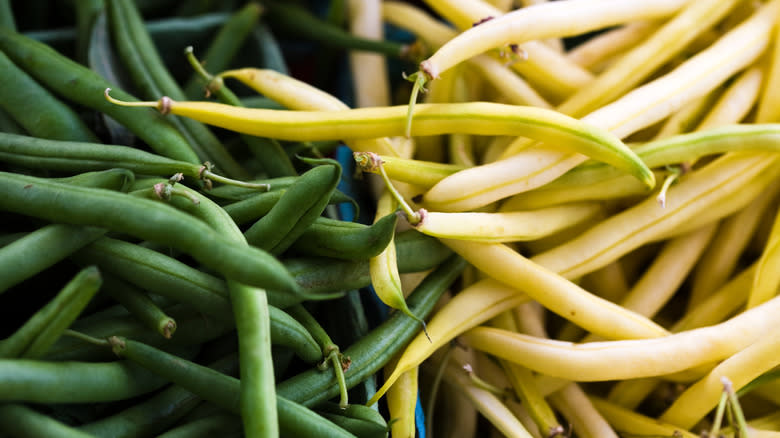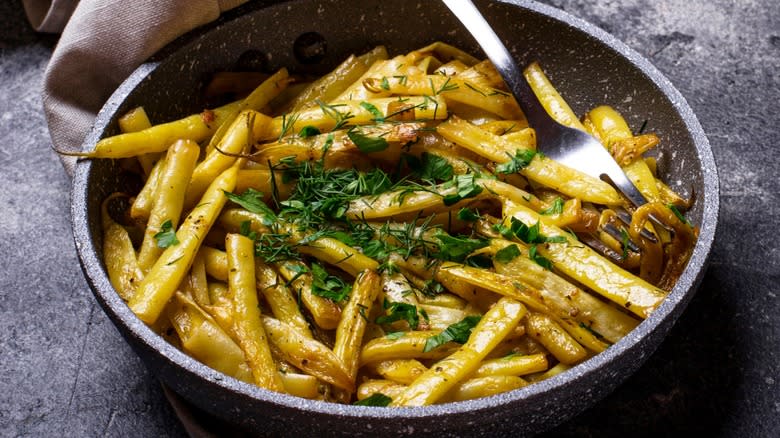Why It's So Easy To Use Wax Beans In Place Of The Regular Green Variety

The produce section of a grocery store or farmers market is undoubtedly the most colorful, with many fruits and vegetables presented in a veritable rainbow of varieties. You'll see green, red, yellow, and striped tomatoes, plums in glorious purples, pinks, yellows, and reds, and even heirloom carrots with orange, purple, and white hues. Many types of beans, like string beans, offer a similar diversity of colors.
While green beans may be the most widespread and popular, string beans also come in a yellow variety known as wax beans. Named for their beeswax-colored pods, wax beans are simply the yellow version of typical green beans. Therefore, they act as the perfect substitute for the regular green variety.
Both green beans and wax beans can grow on a bush or a vine, and their nutritional content is strikingly similar. Wax beans lack the green pigment known as chlorophyll, which is the only physical difference between them and green beans. Their taste and texture are identical, and they also lend themselves well to the same cooking methods. Wax beans will bring a bright, cheerful pop of yellow to your meal, providing a different aesthetic with the same nutritional benefits, texture, and flavor.
Read more: 13 Simple Tricks To Pick The Best Fresh Fruit Every Time
Best Cooking Methods For Wax Beans

Wax beans are interchangeable with green beans and are thus just as versatile. You can steam, boil, roast, sauté, grill, or sear them. Each cooking method will alter the texture and flavor of wax beans. Boiling and steaming them will result in a chewy, moist pod with a juicy interior and a mild flavor. Roasting will brown and caramelize wax beans, creating a richer green-bean flavor, while grilling will add a unique smokiness.
Sautéed or seared wax beans are quick and flavorful, absorbing cooking fats and seasonings and providing pleasantly charred edges. Of course, you can also add raw wax beans to a salad for a nice crunch and mellow taste. String beans are a widespread staple, used in most global cuisines, so they'll taste delicious with any number of seasonings, sauces, and garnishes.
Wax beans may not be available cut and packaged like haricots verts or frozen green beans, so you'll need to rid them of their stems and rinse them before cutting them and using them in your favorite recipe. If you want a feast for your eyes as well as your stomach, you could divide a green bean recipe into equal parts wax beans, green beans, and purple beans for a colorful dish. They'd also make a tuna niçoise salad even more colorful next to fresh green herbs, black olives, red cherry tomatoes, and purple onions.
Read the original article on Tasting Table.

 Yahoo Finance
Yahoo Finance 